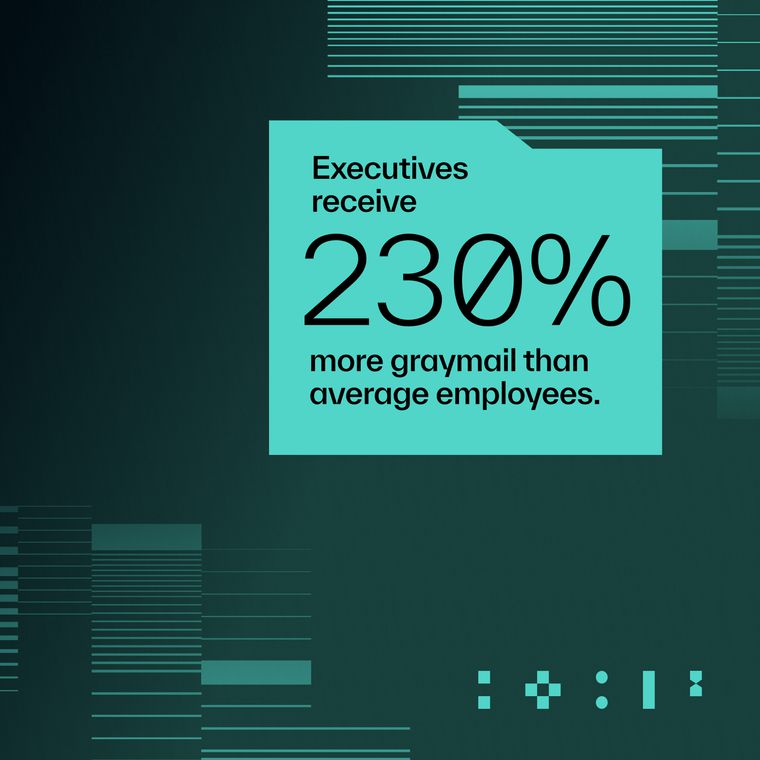8 Threats Redefining Cloud Email Security in 2025
Discover the 8 threats reshaping cloud email security in 2025 and the AI-native capabilities SOC teams need to stay ahead of attackers.
August 19, 2025
/
6 min read

Cloud email is the default channel for business communication and a primary target for modern cyberattacks. The accessibility of generative AI has lowered the barrier to entry for sophisticated threat campaigns, equipping adversaries with tools that easily bypass legacy defenses like secure email gateways (SEGs). IBM reports the average data breach in the U.S. now costs over $10 million, with phishing and vendor email compromise among the leading causes.
As a result, security teams are dealing with both an increase in advanced email threats and a growing operational burden to catch what traditional tools miss. Static detection cannot protect cloud email. Nor can the layering of disparate products designed for an earlier era of infrastructure and threat behavior.
This list identifies the most pressing security gaps in cloud email environments and the architectural capabilities required to address them. Rooted in frontline threat research and real-world deployments, these are the core criteria every security team should evaluate: vendor-neutral, AI-native, and comprehensive in protecting cloud environments through the inbox and beyond.
1. Social Engineering That Evades Traditional Detection
Phishing no longer depends on malicious links or attachments. Many of today’s most damaging campaigns arrive as clean, context-aware messages that appear entirely legitimate. They bypass secure email gateways built to detect static indicators, landing directly in user inboxes.
Once there, they work quickly. According to CISA, 84% of employees fall for phishing emails within ten minutes, giving attackers a narrow but highly effective window for success. Generative AI makes these attacks easier to produce, tailoring tone, timing, and content to match trusted correspondence.
To protect the human vulnerability, defenders must leverage AI to model each organization’s unique communication patterns. By analyzing language, tone, identity attributes, and historical relationships, behavioral AI pinpoints the subtle anomalies that indicate a socially engineered attack—flagging the message before the user engages.
2. Vendor Compromise That Blends into the Supply Chain
When attackers hijack vendor accounts, they inherit legitimacy. Messages come from real domains, reference real transactions, and often continue existing conversation threads. With the help of AI, bad actors can generate messages that precisely mirror a vendor’s tone, phrasing, and timing.
Yet most tools treat vendors like any other external sender. They lack visibility into what’s typical for that relationship and can’t detect when a vendor deviates from normal behavior.
The solution starts with behavioral intelligence. The ideal platform will model communication patterns for each vendor, tracking cadence, recipient norms, and transactional context. It will flag deviations like unusual requests, late-stage payment changes, or new recipients. Anything less leaves the supply chain wide open.
3. Slow Remediation That Widens Exposure
Most SOC teams still rely on user reports and triage queues to identify malicious emails. Even when a threat is confirmed, it often lingers in inboxes while security teams investigate and manually remove it, giving users time to click, forward, or respond. According to IBM, phishing-related breaches take an average of 254 days to contain, creating a prolonged window of risk.
This delay is not just a workflow inefficiency; it is a direct security exposure, especially when attacks are credible enough to evade detection and appear trustworthy to users.
Threat remediation must be autonomous and instantaneous. Modern solutions should identify high-risk messages as they arrive and remove them from all affected inboxes without manual intervention, providing both speed and containment at scale.
4. Internal Threats That Move Undetected
Once attackers gain access to an internal account via credential compromise or app misuse, they often use it to phish other employees. These lateral attacks come from trusted sources and mimic real workflows, making them extremely difficult to detect.
Traditional tools focus on inbound filtering. They rarely inspect east-west email traffic or monitor the behavioral patterns of internal users.
Stopping these threats requires internal visibility powered by behavioral AI. Platforms should continuously analyze login behavior, message history, and identity signals across the organization to identify abnormal activity, including internal phishing, unauthorized data access, and suspicious message routing.
5. Account Takeovers That Exploit Blind Spots
Attackers don’t always need to steal credentials. They exploit legacy authentication, phish session tokens, and install malicious third-party apps to gain persistent, invisible access. By mimicking login patterns and device usage, they can remain undetected for days or weeks before striking.
Most tools identify these threats only after the compromise is well underway, lacking the ability to correlate identity signals and behavioral context early in the intrusion.
Effective protection requires proactive identity monitoring. Security tools should analyze sign-in activity, geolocation, browser fingerprints, and app behavior in real time—surfacing anomalies that signal compromise, and initiating automated response before attackers can escalate access or exfiltrate data.
6. Misconfigurations That Open the Door
Misconfigured tenants, excessive permissions, and unmonitored app integrations give attackers frictionless paths into the email environment. These risks are often overlooked, especially by tools that stop at inbox scanning.
Attackers know this. They exploit overly permissive APIs and buried admin settings to create durable access points without triggering alerts.
Email security must extend beyond the inbox. A modern platform should continuously monitor Microsoft 365 and Google Workspace configurations for risk, tracking privilege drift, unsafe app permissions, and administrative changes that could expose sensitive data or grant access to threat actors.
7. Graymail That Buries the Signal
Executives and employees alike are overwhelmed by promotional messages, newsletters, and internal bulk sends. These emails aren’t just annoying; they increase the chance that users miss or misinterpret real threats, a risk amplified when bad actors manipulate graymail volume as cover for email bombing attacks. Traditional filtering solutions rely on static rules or end-user sorting, which creates friction and inconsistent results.
A behavioral approach to inbox management is essential. Platforms should learn from individual user engagement, automatically deprioritizing or filtering bulk mail without relying on quarantines or rigid filters. This approach reduces distraction and improves the odds of spotting high-risk messages when they arrive.
8. Awareness Training That Doesn’t Reflect Real Risk
Security awareness matters, but most programs are outdated, impersonal, and burdensome to manage. Users ignore irrelevant simulations. Security teams spend hours deploying content that fails to prepare employees for actual attack scenarios.
Training that’s disconnected from real threats doesn’t improve judgment. It adds overhead without impact.
Training must be timely, contextual, and adaptive. Platforms that leverage AI can convert real attack attempts into personalized simulations and feedback, tailored to each user’s role and risk level. Automated delivery keeps training aligned to current threats while lightening the SOC’s workload by removing the need for manual campaign management.
Closing the Gaps with AI-Native Protection
Cloud email is too critical—and too frequently exploited—to rely on security architectures designed for the threat landscape of yesteryear. The organizations best positioned to defend against modern threats are those that treat cloud email security as a living, adaptive system.
With AI-powered solutions, defenders can move from reactive containment to proactive prevention, reducing dwell time, easing operational strain, and keeping critical communications secure in an era when every message matters.
For expanded guidance and a 10-point list of must-ask questions during cloud email security vendor evaluation, download the Abnormal Essential Guide to Cloud Email Security today.
Related Posts
Get the Latest Email Security Insights
Subscribe to our newsletter to receive updates on the latest attacks and new trends in the email threat landscape.


